I love early season skiing. LOVE it.
Why?
Because when Britain is like this…
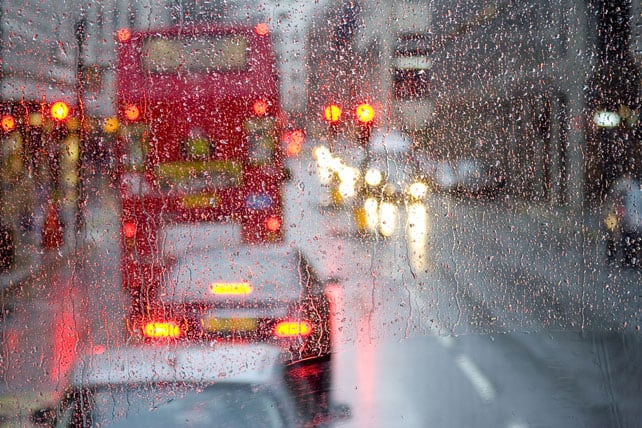
You can get this…
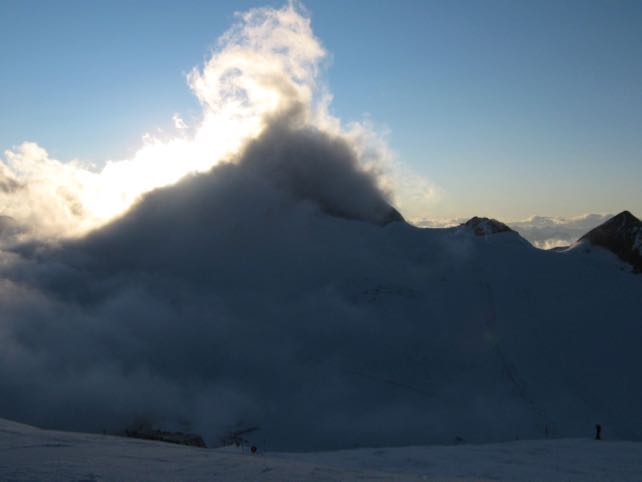
And this…
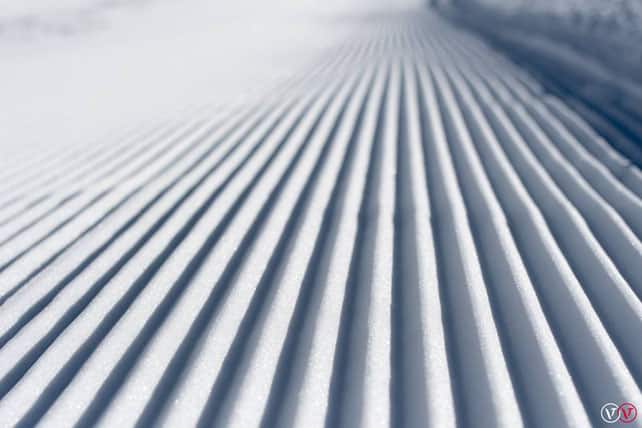
And – occasionally – this…
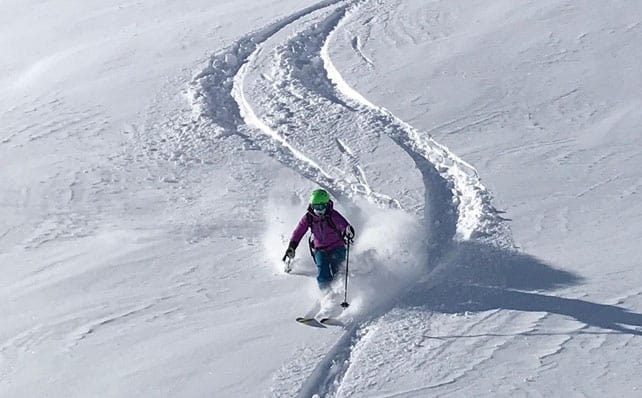
But there’s more to early season skiing than simply jumping ship at a murky and frenetic time of year. There’s also something profoundly satisfying about embracing winter right at its start. There you are, falling into step with Mother Nature, and wringing maximum pleasure from life in the process. Suddenly, it seems like you’re winning.
But there is one notable drawback
This…
This photo, taken in November 2014 is a reminder of how thin early-season snow can be. In the Alps, the winters of 2014, 2015 and 2016 all got off to rotten starts: characterised by warm spells that lasted right up to Christmas and beyond. In many of the lower resorts in France, the 2016-7 ski season didn’t really get underway until January 13.
By contrast, the early season of 2017-8 was much better. And the pre-Christmas weeks of winter 2018-9 weren’t bad either. But that doesn’t change the fact that this is a flukey, uncertain time.
So how do wring the maximum amount of skiing pleasure from November and early December? Simple. You aim high.
Altitude is a priceless asset at this time of year (as it is for much of the ski season). So too is a glacier and/or a powerful snow-making system. It’s also a great time of year to sign up for a ski-technique training camp – because you don’t need 100 miles of piste if you’re skiing through gates or fine-tuning your turns over moguls. In fact, the day after I took the photo in Tignes, above, I had a superb morning on an all-terrain course with the British ski school Snoworks, higher up the mountain.
Don’t forget that prices are lower at this time of year too. Even when the snow’s good, tour operators are discounting holidays in the run-up to Christmas, because so few people can spare the time to ski. That means bargain-hunters (and powder-hunters) can sit tight until the last minute, wait to see if the early-season snow comes, and then book. Not surprisingly, the lucky few who do get out can’t really believe their luck, and the atmosphere is fresh, giddy and adventurous.
So here then is my pick of nine of the best resorts for early season skiing – six for November, and three for the first three weeks of December (though of course you can ski the November ones in December too). Now all you have to do is sacrifice a few chickens to the Snow Gods and keep your eyes on our snow reports, and a reliable weather forecast. (Check out Ski Deals pages too.) If conditions look promising, pounce.
November resorts
1. Hintertux, Austria: steep on-piste skiing…

Even when there’s barely a flake of snow lower down.

It’s home to the best early-season terrain park in the Alps, too.
Why do so many ski-racing teams train on the Hintertux each autumn? Because it’s the steepest of the Alpine glaciers. Watching them bomb through the gates at what looks like Mach3 is an awe-inspiring experience – and you can have a go yourself by joining one of the race-training or season warm-up camps that run alongside them. In November, British race-training specialists ATC is often on the glacier, as well as Canadian ski school Section 8; or you could have lessons with one of the local ski schools. You could even call the lift company (+43 5287 8510) to set up your own lane of gates. Bear in mind, though, that this is serious stuff. The pitch of the slopes means you’ll be skiing at speed.
Ambitious freestylers need to put Hintertux on their hitlist, too. It’s home to the Betterpark – the best early-season terrain park in the Alps (watch the video here if you can’t see it above). If the autumn snow is heavy enough, it will open in mid-September, with the Hotzone opening party scheduled for October 3 this year.
Best for: big, bold freestyle tricks and high-speed race-training. There’s room for ordinary piste-skiing here, but as with most glaciers you’ll be bored of it after a couple of days if you don’t sign up for tuition and work on your technique.
Getting there: fly to Innsbruck, pick up a hire car and stay in the friendly Hintertuxerhof hotel at the bottom of the lifts. Or ask Snow-Wise to tailor-make a trip.
2. Tignes, France: snow-sure skiing on the glacier…
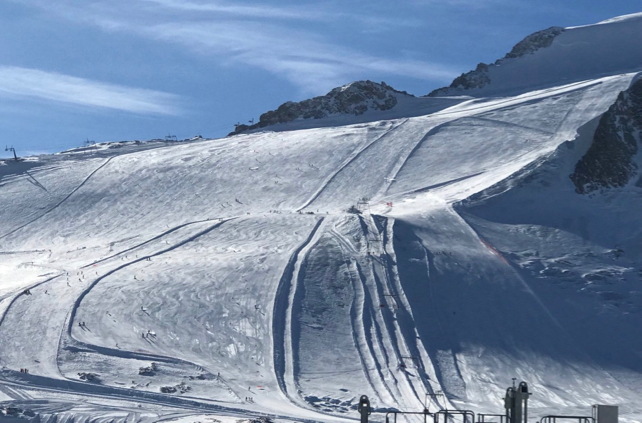
Plus Brit-friendly ski camps…

And top-to-bottom skiing as soon as conditions allow.
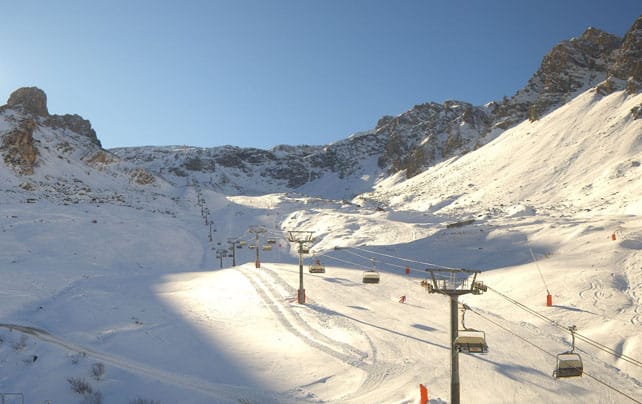
Brits who want to sharpen up all aspects of their technique – aside from terrain-park tricks – should target Tignes. Its slopes are generally gentler than those of the Hintertux (see above), and it’s well-served by English-speaking ski schools in November, including Snoworks, which runs a brilliant programme of race-training and all-terrain camps on the glacier. You can also join the convivial and confidence-boosting Premiere Neige Ski Clinics run by Welove2ski’s very own Peter Hardy, in collaboration with chalet specialist Le Ski and the famous Val d’Isere guide, Pat Zimmer.
In 2019, the glacier is scheduled to open on September 28 – though it’s worth remembering that the opening was postponed by three weeks last year because of mild weather and a lack of snow cover. That could easily happen again after the roasting weather of June and July. Meanwhile, the whole of the Tignes-Val d’Isere should be up and running on November 30. In Tignes itself they’ll open up the pistes earlier if the snow allows.
Best for: intermediates as well as more advanced skiers.
Getting there: book Peter Hardy’s clinics direct with Le Ski – packages include flights, transfers and catered chalet accommodation in Val d’Isere. Snoworks uses the Tignes Chalet Company’s properties for accommodation during its autumn courses. As the mainstream season gets underway you can also book self-drive, self-catering holidays with Ski Collection from November 23, and flights-inclusive chalet holidays packages with Mark Warner from December 8 and with Ski Total and Skiworld from December 15.
3. Lake Louise, Canada: we can’t promise a rerun of 2017…
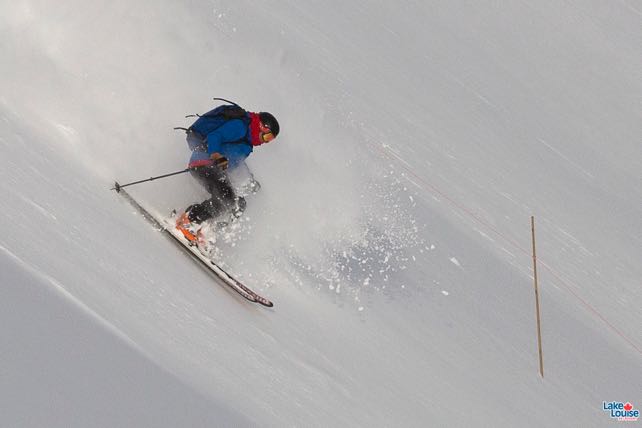
But it is usually cold as autumn turns to winter…
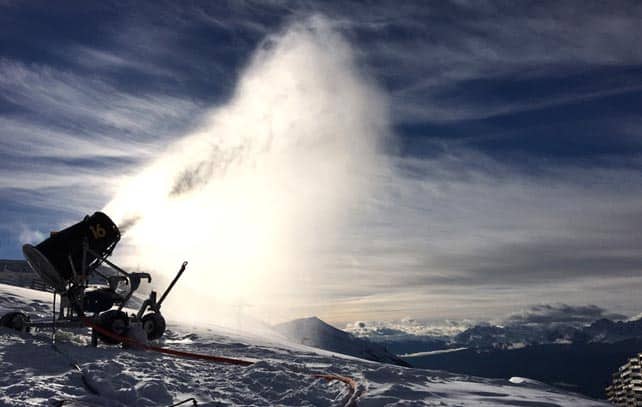
Which is why it’s an early fixture on the World Cup calendar.
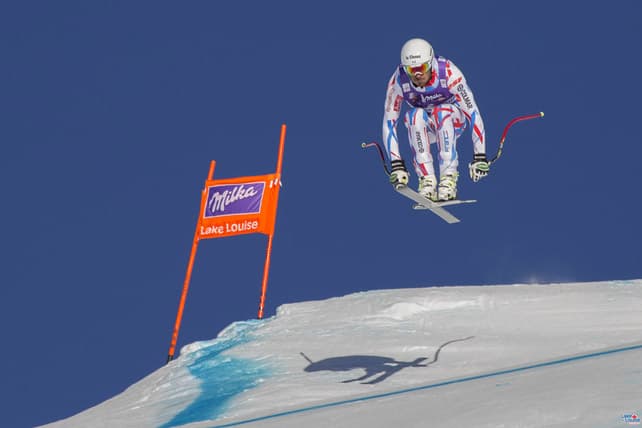
Winter bites early in Banff National Park. 2015, 2016 and 2017 all saw strong starts to the season – as there were in 2012 and 2013. But even when Mother Nature doesn’t deliver much in the way of natural snow, it’s usually cold enough for the resort to work its snow cannons hard and lay a solid base down on the pistes. That’s why FIS uses Lake Louise – the biggest of the Banff ski areas – as an early stop on the World Cup tour.
Most of the hotels in the area are in Banff itself. But unless you’re a raging party monster, you’re better off staying in Lake Louise – home to the best piste-skiing in the park. Yes, the village is dead at night, but to be honest, if you’re coming to this part of Canada, the lack of nightlife should be part of the attraction. After all, you’re in one of the world’s great national parks – a profound sense of quiet, combined with wide-open, unpeopled spaces, are what it’s all about. If you want to dance in your ski boots till 2am, go to Ischgl (see below).
Best for: intermediate skiers who don’t want to spend the whole time in ski school.
Getting there: November is too early to pick up a package from the likes of Inghams or Skiworld, which run holiday programmes in the resort from mid-December. But North American ski specialist Ski Independence can tailor-make a November trip.
4. Obergurgl, Austria: plenty of skiing between 2,000 and 3,000m…
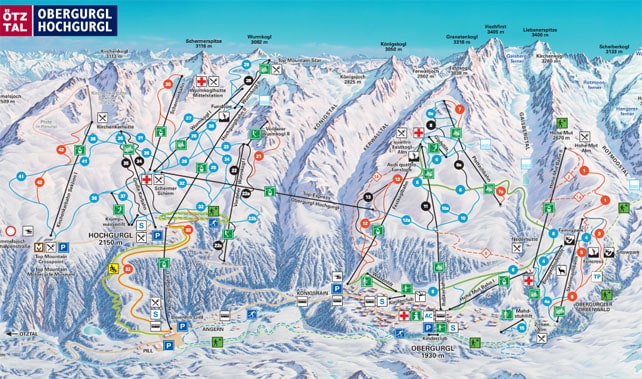
Plus a favourable location…
View 6456 Obergurgl in a larger map
Usually adds up to this…
https://www.youtube.com/watch?v=gkE5ztwByuo
The linked villages of Obergurgl and Hochgurgl are set at the end of long, high valley, deep in Alps, close to the Austro-Italian border. They’re cold and remote, and if Italy is getting all the snow, rather than the northern Alps, theirs is one of the few ski areas in western Austria to benefit. As a result, they’re always amongst the first non-glacier resorts in the Alps to open. This year the first day of the season is set for November 14.
Just in case Mother Nature doesn’t deliver, the resort also has snow-making equipment to cover 99% of its pistes. But all the same, early on, I’d wait until the last minute to book, to be sure conditions are good, and you can ski pretty much the whole area.
Best for: intermediates, who want a proper ski holiday at the start of winter – rather than a training camp. Bear in mind that you can also ski the glaciers at Solden, which is a short shuttle bus/car journey along the Oetztal.
Getting there: fly to Innsbruck, pick up a hire car and check out the early-season accommodation-and-lift-pass packages offered by hotels at obergurgl.com – such as the central and highly rated Josl Mountain Lounging Hotel. Or ask Momentum or Snow-Wise to tailor-make a trip. Once December comes you can book flights-inclusive packages from the likes of Inghams.
5. Ischgl, Austria: it’s not just the skiing that that counts…
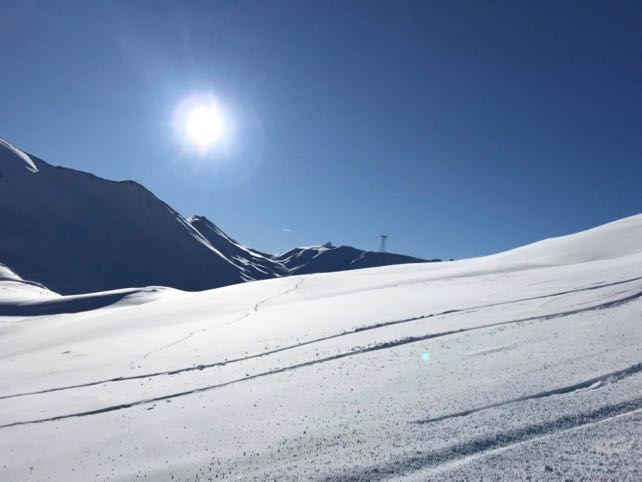
It’s the opening party
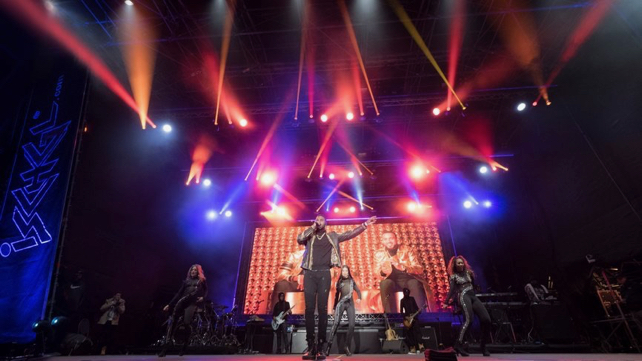
But all the same, they really know how to make snow
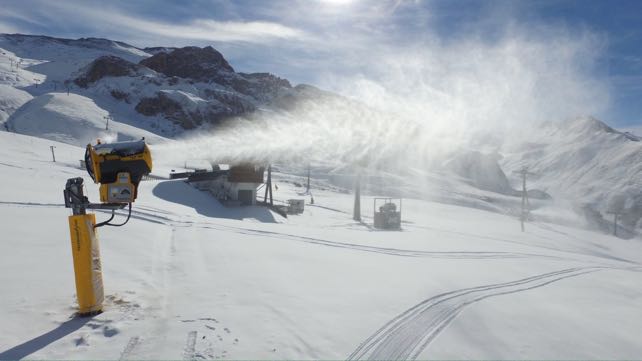
As a rule, Ischgl doesn’t open until the end of November: this year, for example, the lifts won’t be spinning until November 28. But party animals need to take note all the same. If you want a firecracker start to the season, this is the place.
Of course, the headline act may not be to your taste. Last year, American R&B singer Andrea Berg opened the resort. This year, it’s 10-piece Berlin band Seeed, who play a mix of Reggae, Ska, Dancehall and Hip Hop. Either way, what really matters is that everyone is determined to have a blast: and the whether it’s in the Trofana Alm or the nightclub Pacha, you’ll find the atmosphere infectious.
Best for: intermediate-level skiers, and expert-level party-goers.
Getting there: for opening weekend, you need to book ahead – the resort’s hotels often sell out completely. Fly to Innsbruck or Zurich, pick up a hire car and if budget allows stay at the lovely Hotel Jaegerhof in the middle of town. Ski Total has a good chalet-hotel in the resort too: the Abendrot, which is available from December 7.
6. Zermatt & Cervinia: autumn storms over northern Italy…
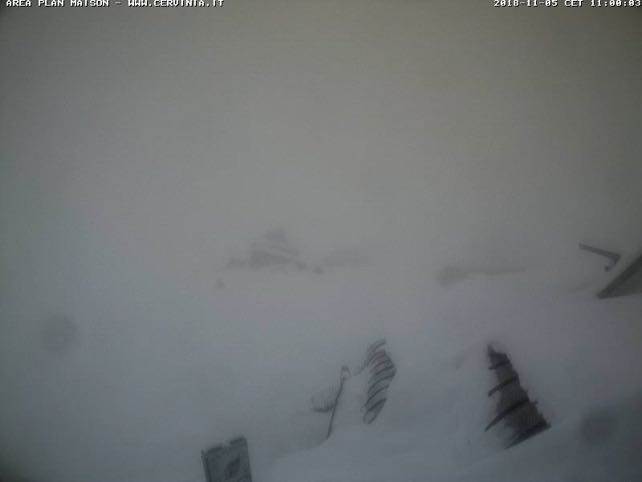
Combined with some of the highest slopes in the Alps…
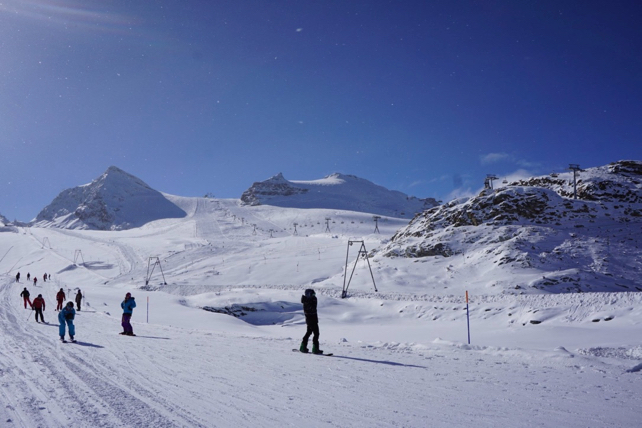
Can translate into the region’s most extensive early-season area of snow…
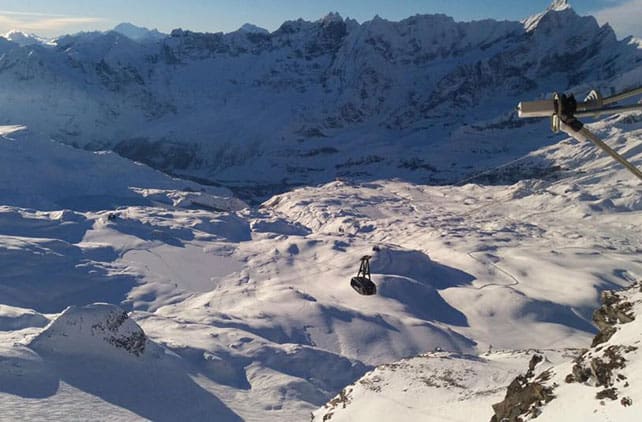
And some of its best lunches, too.

As winter approaches, Mother Nature often bowls the Alps a googly. Cold and snowy weather doesn’t roll down from Scandinavia or the North Atlantic, as most skiers hope. Instead, an area of low pressure muscles in from the Gulf of Genoa in the Med. Mild, humid and slow-moving, it brings torrential rain to much of northern Italy.
When it does, fans of Cervinia and Zermatt get excited. These two resorts share what is essentially the biggest area of high-altitude slopes in the Alps. Straddling the Swiss-Italian border, it covers a high, flattish ridge, rising to 3,883m, and two plateaux, both of which are above 2,500m: and when one of these Mediterranean storms set in, the area gets plastered in snow. November 2016 was perhaps most spectacular recent example. Then, when much of the Alps was enduring another snow drought, Zermatt and Cervinia could boast 160cm of cover on the slopes along the international frontier. Early November 2018 saw a big early-season storm here too.
It doesn’t always go like this of course. But when it does, canny skiers dream of skiing in the shadow of the Matterhorn (or Monte Cervino, as it’s known in Italy). They dream of a good ski lunch too. Several of the world’s best mountain restaurants are to be found here, including the Chalet Etoile. Last winter, after another cracking early-season storm, it was open for business on November 6.
Best for: intermediates. On the Cervinia side of the frontier, there are some cracking upper-intermediate pistes to be skied in this high-altitude zone. More advanced skiers will find groomed slopes in the high-altitude zone rather gentle. They’re better off hiring a guide in Zermatt and hunting powder, off-piste.
Getting there: first of all, you have to decide which resort to stay in. Cervinia suits those on a budget much better than Zermatt, which is home to some of the most luxurious ski accommodation in the Alps. In Zermatt, consider the upmarket Matterhorn chalets. In Cervinia, the Saint Hubertus resort is rather chic, while the Hotel da Compagnoni is friendly and affordable spot in the middle of town.
Early-December Resorts
1. Val Thorens, France: a lot of altitude…
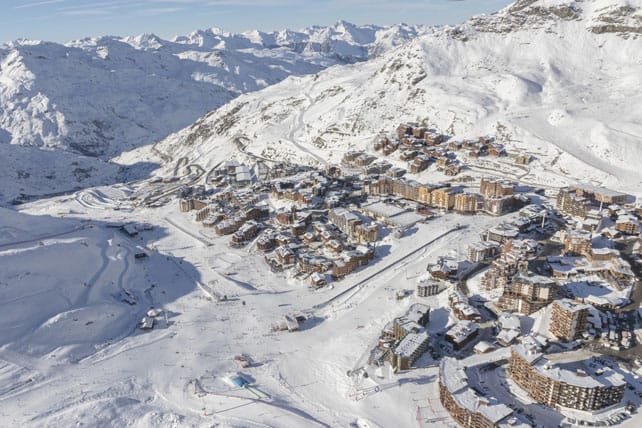
A bit of attitude…

And, sometimes, a flake or two of snow.
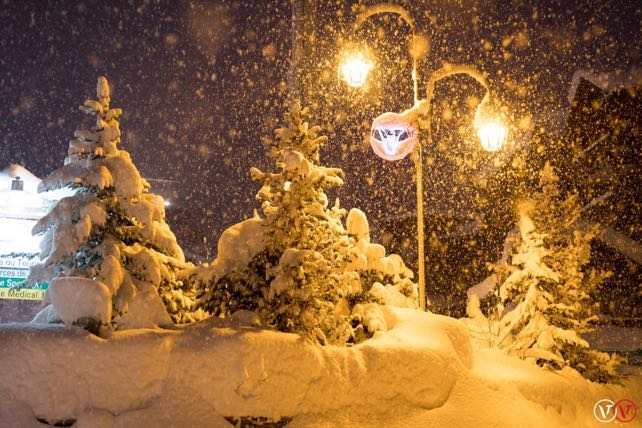
Yes, yes, we all know Val Thorens is the highest ski town in the Alps. But what really matters is not the elevation of the buildings: it’s the fact that 99% of its ski area is set above 2000m, and that at seven separate points the lift system rises to 3000m or higher. The whole place is high-altitude: so even if there’s not much early-season snowfall, the snow cannons will have plenty of cold nights in which to lay down their cover on the pistes.
In 2019, Val Tho’s opening party – La Grande Premiere – is set November 23 and 24. If the snow’s good, and you can drop everything and go, then check it out. This winter, 57 ski and snowboard brands will be in the the resort offering free gear tests, and if winter is off to an early start, nearly 30,000 people are expected hit the slopes. But if you plan to come for a whole week and want to ski more of the Three Valleys, wait till December 7 when (weather permitting) the neighbouring resorts of Les Menuires and Meribel will be up and running too. Its buzzing apres-ski scene will be building nicely by then, too: so if they weather is half-decent you’ll be able to get a proper ski holiday under your belt for a fraction of the normal price.
Best for: intermediates, night-owls and (if there are a couple of decent dumps in early December) off-pisters, too.
Getting there: lots of tour operators offer mid-December holidays to the resort, including Ski Collection, Ski Total for catered chalets, Momentum and Snow-Wise for hotels, and Inghams and Skiworld for all accommodation types. Pick of the hotels in the resort is the piste-side Altapura.
2. Val d’Isere, France: snow from the Atlantic…

And snow from the Med…

Usually add up to cracking early-season conditions
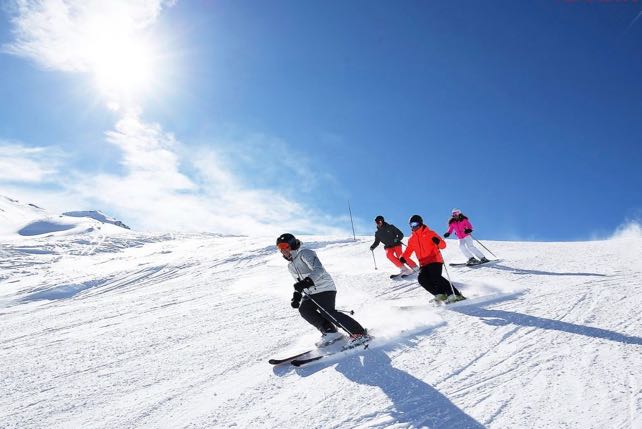
Just like Obergurgl, Val d’Isere gets its weather from more than one direction. Storms from the Atlantic are its most frequent providers of the white stuff: but when low pressure systems muscle into northern Italy from the Gulf of Genoa, Val gets snow too – which often misses resorts further west, such as Les Arcs and La Plagne.
In other words, Val has – by Alpine standards – a reliable climate. Its high and remote setting, deep in the mountains, helps to keep it cold, too. You’re not guaranteed deep snow, but the early weeks of the 2016 season were a striking reminder of how much better Val d’Isere’s snow can be than other resorts in the French Alps. In 2019, the opening day is scheduled for November 24 – which should also see the opening of the highest hotel in the French Alps: a href=”https://lerefuge-valdisere.com/en/” target=”_blank” rel=”noopener noreferrer”>Le Refuge de Solaise.
Once you get there, you’ll be impressed by the early season atmosphere. This isn’t one of those resorts that winds up slowly to Christmas. There’s a buzz in the air right from the start. Coming back to Blighty in mid-December, after a week on its slopes, can be quite a come-down.
Best for: all kinds of skiers, except the wobblier kind of intermediate. If there’s no powder, then the experts can amuse themselves playing people-slalom on famous runs like the Face. Thanks to the large numbers of British ski instructors based in Val d’Isere, this is also a great resort in which to get early-season tuition.
Getting there: the world and his wife will get you to Val d’Isere. YSE, Le Ski and VIP are among those offering chalet holidays, Erna Low, Ski Collection and Powder Beds will sort you out with an apartment, and Momentum can help you find an upmarket hotel.
3. Whistler, Canada: the maritime climate doesn’t always cooperate…

But the early-season scene is buzzing…
And when those Pacific storms deliver – OH MY.

Whistler’s early-season snowfall stats are impressive. In November 2017, the top half of the mountain was walloped by 366cm of the white stuff in a single month, and in November 2009 it was a mind-boggling 560cm. That’s more than most Alpine resorts get in an entire season. (In 2018 November was unusually dry, with only 88cm of snow, but in December there was 373cm.) Often the storms last for several days – which means lengthy periods skiing the trees rather than the high, “Alpine” areas: but all the same, it’s not hard to see why it’s on most the hit-list of every serious off-pister.
That said, the maritime climate doesn’t always deliver, and the temperature can yo-yo about a bit too. Welove2ski has been in Whistler in early December when a mild spell has suddenly turned frigid, without any accompanying snowfall, and virtually the whole mountain turned into an ice rink.
As a result, you need to be realistic when you book it. Yes you might get thigh-high powder, three or four days in a row. Or you might have to get your edges sharpened and ski the pistes like a downhill racer. Either way, you can be sure of a buzzing atmosphere, at the weekends, at least. The locals love their skiing: it takes a lot of top-to-bottom runs to burn off their excitement.
Best for: advanced skiers.
Getting there: North American specialist Ski Independence can tailor-make an early-season trip. From mid-December, Inghams and Skiworld also offer flight-inclusive packages. By the way, booking Whistler ski holidays in August is usually a good idea when accommodation and lift pass prices are discounted by up to 40%.










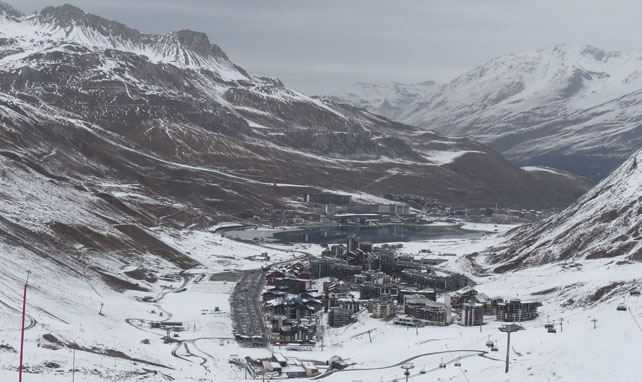
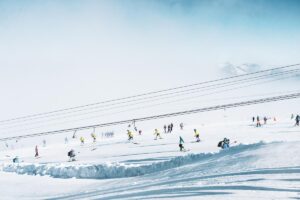
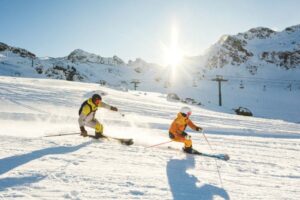
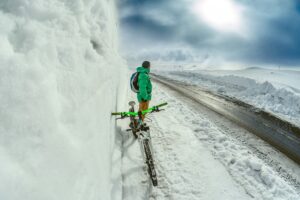
Hi,
No mention of Zermatt, which has reliable early snow conditions. Easy access via Easyjet and a Transfer ticket which you can buy from the Swiss Tourist Office in London. Book a hotel online and an inexpensive early ski week especially if you book the Matterhorn Ski Week and go off piste with a guide. Package includes ski hire, lift pass, Guide and hotel.
Alternatively, go to Cervinia via tour companies or independently with a coach service direct from airports or mainline rail stations.
Ian
Hi, just came accross this site. I’m looking fir some advise on where to take our 4 and 7yr old next xmas. They have never skiied before and I would like to drive, but as short a drive as possible. I know its got to be a compromise between cost, beginner slopes and distance. We would rather somewhere quieter and cheaper. Thanks in advance.
Jenny
Do you want to go with a family specialist tour operator or arrange your own holiday? France or Austria? A pretty and traditional resort or purpose-built convenience?
” But if skiing lots of pistes is your aim, I’d wait till December 9 when (weather permitting) the neighbouring resorts of Les Menuires and Meribel will be up and running”
I would bet a reasonable amount that the Meribel date is just an attempt to gain publicity and it won’t open until the following week . Apart from anything else there won’t be enough customers to run more than a couple of lifts, even if there is the snow and the same applies to restaurants. Tourist Offices try to pressurize restaurants into opening both early and late in the season, but they won’t pay wages and accommodation for a full crew of workers when they might get 30 or 40 customers in a whole day.
Saas-Fee gets my vote for the best early skiing in Switzerland. Great glacier, pretty village and easy access to the Glacier. Many national teams are currently training there on fresh snow.